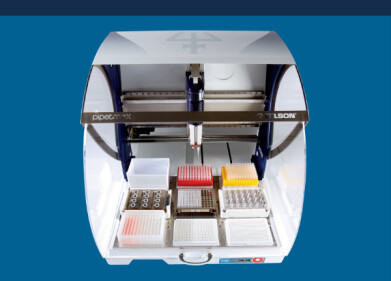Laboratory Products
5 Tips for Laboratory Equipment Maintenance
Jun 26 2014
The condition and quality of your laboratory equipment impacts upon its performance and
the results generated - scientific results may be compromised by a lack of proper
maintenance. Here are 5 tips for laboratory equipment maintenance you should be aware of:
1. Repairing
Naturally, in some instances, laboratory equipment needs to be replaced entirely. However,
other times, simple repairs may be adequate. Conduct small repairs, such as installing
replacement parts, as and when they are needed. This can elongate the functional life of
larger pieces of laboratory equipment significantly.
When it comes to larger pieces of equipment, some parts will accrue wear more rapidly than
others. Pay close attention to which parts of your equipment are showing signs of wear and
embark upon a program of preventative maintenance. The Laboratory Equipment Buyer’s
Guide, your complete resource for lab equipment and technologies, can help you source
new equipment.
2. Refurbishing
Refurbishing refers to the process of dismantling pieces of laboratory equipment and
cleaning each component part thoroughly. Metal elements are also polished and any pipette
pistons can be lubricated. Refurbishing at regular intervals will extend the life of your
laboratory equipment and increase its efficiency and functionality.
3. Calibration services
Calibration services should be sought regularly. These preventative, detailed services
increase the accuracy of your equipment and prevent data corruption.
4. Regular cleaning
Regular cleaning is too often overlooked. If your laboratory equipment is not as clean as it
can be, it is unlikely to yield consistent results. Cleaning your equipment thoroughly, at
regular intervals, is among the best ways of keeping it in good working order and elongating
its functional life. On a daily basis, wipe clean exposed surfaces, and schedule a deep clean
once each week.
Most pieces of equipment need to be cleaned in a certain way. Haematology machines, for
example, typically require a 6 monthly check by an engineer, a weekly analyser surface
clean and an HC control check monthly. Ensure you follow the correct cleaning procedure as
documented in the standard procedures for your piece of equipment.
5. Outsource or in-house
Laboratory equipment maintenance and repair should be undertaken by a qualified
professional. While in-house maintenance teams may prove costly, reputable third party
equipment maintenance and repair can be a cost effective alternative. Since the reputation
of any laboratory is only as strong as the accuracy of its lab equipment, regular cleaning,
maintenance, calibration and refurbishing is essential.
The article Laboratory Equipment – Maintenance or Management? discusses different
approaches to the protection of lab assets in more detail.
Digital Edition
ILM 49.5 July
July 2024
Chromatography Articles - Understanding PFAS: Analysis and Implications Mass Spectrometry & Spectroscopy Articles - MS detection of Alzheimer’s blood-based biomarkers LIMS - Essent...
View all digital editions
Events
ACS National Meeting - Fall 2024
Aug 18 2024 Denver, CO, USA
Aug 25 2024 Copenhagen, Denmark
Aug 28 2024 Phnom Penh, Cambodia
Sep 04 2024 Chiba, Tokyo, Japan
Sep 04 2024 University of Warwick, Coventry, UK










24_06.jpg)







